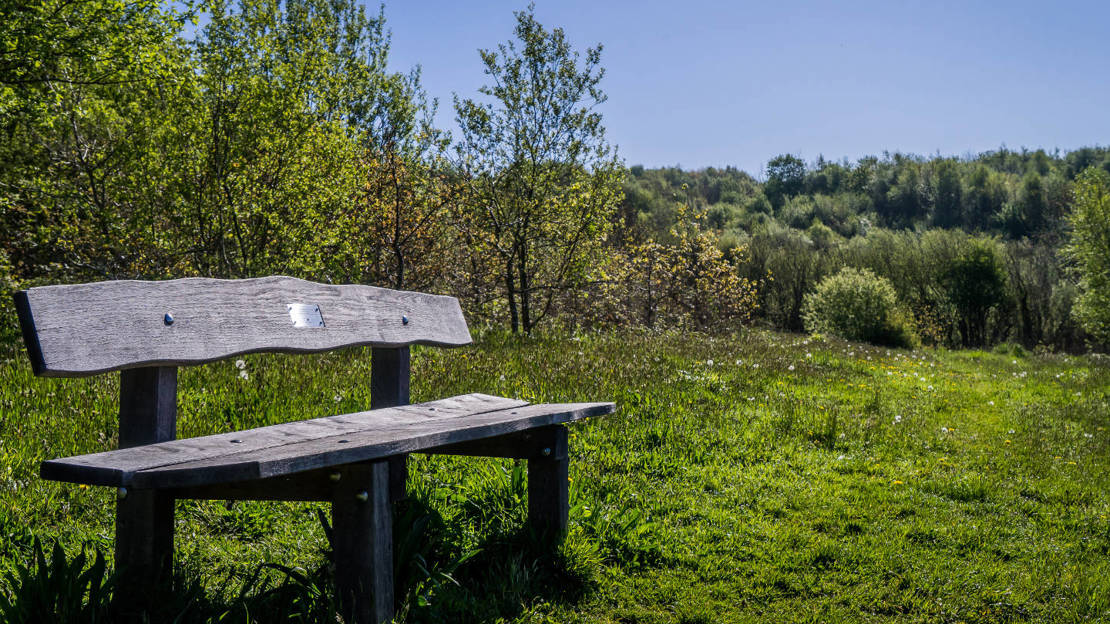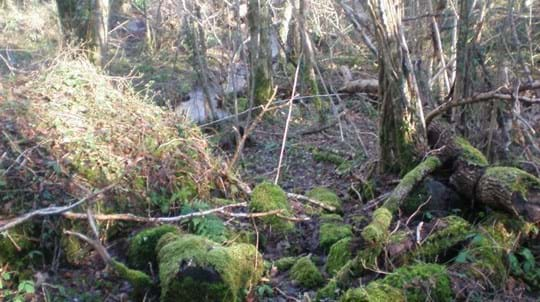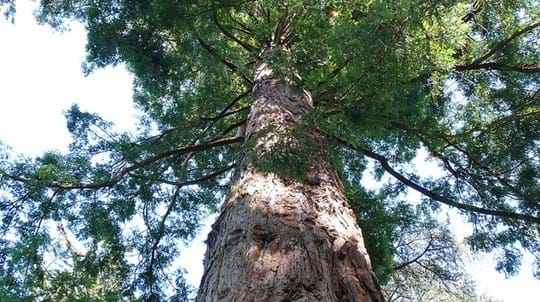
Parc Mawr
Henryd Conwy

Woodland Trust wood
33.94 ha (83.87 acres)
SH757737
Explorer 17
OS Landranger 115
With a resident colony of lesser horseshoe bats, displays of bluebells in spring and breath-taking views from the mountains to the coast, Parc Mawr is a spectacular wood to visit.
In summer, look out for colourful foxgloves and brilliant butterflies, including the comma and speckled wood. If you’re lucky you might even catch a glimpse of a red squirrel scurrying by.
Features
- Parking at site
- Public access
- Autumn colour
- Spring flowers
How to get to Parc Mawr
Parc Mawr is located on the western side of the lower Conwy valley, on the lower slopes of the Carneddau Mountains in Snowdonia. It is 4km (2.4 miles) south of the medieval town of Conwy, near the villages of Henryd and Rowen.
The route to the wood is along a narrow country lane, signposted to the village of Henryd off the B5106 Conwy to Llanrwst road. After passing through Henryd, follow the twisting lane, ignoring all junctions off it, as it eventually climbs steeply past an old mill (now a house) to reach the wood 1.6km (1 mile) from the junction off the B road.
The nearest railway station is at Conwy (request stop), but more frequent trains stop at Llandudno Junction 1.6km (1 mile) to the east.
Visit National Rail for more information.
Buses travel hourly on weekdays between Conwy and Llanrwst, via Dolgarrog along the B5106 stop at the junction of the lane to Henryd village. From here it is a 1.5km (0.9 mile) walk along a country lane without pavements. Follow the lane through Henryd, ignoring all junctions off it, until you reach the lay-by at Parc Mawr’s main entrance, just after a farm entrance on the left.
There is also a twice-daily bus service from Conwy to Henryd village itself.
Visit Traveline for more information.
Facilities and access
The woodland is accessible by many public footpaths in the surrounding countryside, and is traversed by an old by-way leading up to the ancient church of Llangelynnin above the wood.
The paths and tracks within Parc Mawr enable you to create your own circular routes. To give you an idea of distance, a circular walk from the main entrance to the southernmost part of the wood and back is at least 3km (1.8 miles) in length.
From the main entrance from the lay-by at the northern end of the wood, a wide forest track with a stony surface climbs southwards, very steeply at times. This route eventually levels out (after a vertical rise of over 110 metres) where you can get excellent views up the Conwy valley and down to the sea.
Several other paths run across the slope through Parc Mawr north to south, although there are many other paths that are often very steep or with flights of timber steps.
The least strenuous walk follows the public footpath down the farm track near the lay-by at the main entrance, entering Parc Mawr up a short flight of steps to a gate in 100 metres. Following this (keep left at all junctions) leads, via a wider and fairly level track, to the old byway just over 1.5km away.
You’ll find benches at strategic points so you can enjoy the views and take a breather before the next stage of your journey.
Parking is available in the lay-by at the main entrance to Parc Mawr, at the northern end of the wood.
The nearest public toilets are in the village of Rowen, south of the wood. There are several public toilets in the town of Conwy, 4km (2.4 miles) north of Parc Mawr.
Wildlife and habitats
Animals
A colony of lesser horseshoe bats inhabits Parc Mawr, spending the winters in the shafts of the old lead mine. Greater horseshoe bats have also been spotted here.
You may see blackcaps, willow warblers and chiffchaffs in the trees, and comma and speckled wood butterflies during the warmer months. If you’re lucky, you might even spot a red squirrel or two.
Trees, plants and fungi
From dazzling bluebells to bright, white wood anemone, beautiful blossoming wild cherry and stately sessile oak, there is an abundance of flora to see at Parc Mawr.
Habitats
Parc Mawr was once ancient woodland, but much of it was felled and replanted in 1963 with conifers and beech. You can still find some native trees, including mature oak, ash and hazel and even some old, veteran trees, especially along and near the ancient trackway that bisects the woodland in the south.
There is also a dense young broadleaved area, with birch, wild cherry and hazel which have naturally regenerated from the original canopy trees.
History of Parc Mawr
Industrial archaeology
Parc Mawr’s woodland has been modified a lot over the years. You can still find the remnants of a lead mine in the northern tip of the wood which was worked mainly between 1892 and 1956, but may even date back to medieval times. These days, the shafts are now home to a colony of lesser horseshoe bats.
Other important industrial archaeological features include the underground workings, a fine smelter chimney and its unusual underground flue – all of which have been conserved over the years.
Changing site character
The planting of conifer and beech trees in the 1960s dramatically altered the character of the wood, and in the 1970s, Dutch elm disease devastated the remaining elms that were once common there. Nevertheless, remnants of the original woodland have endured, with the survival of many mature canopy trees that pre-date exotic introductions.
Pilgrim’s Way
The North Wales Pilgrim's Way (linking Basingwerk Abbey with Ynys Enlli) passes through the wood from the south and climbs to the ancient church. The sunken way to the church is thought to be as old as the Bronze and Iron Age remains that can be found on the flanks of Tal y Fan above, while the church was founded as early as the 6th century.

Dedicate at this wood
This wood is one of more than 50 across the UK where it's possible to dedicate trees, benches or larger areas of woodland. Mark a special occasion or celebrate the life of a loved one with a meaningful gesture that lasts.
Choose a dedicationThings to do in Parc Mawr

Visiting woods
Walking dogs in our woods
Dogs are welcome for walkies in our woods. Take a look at our tips and guidelines for ensuring we keep our woods safe and special for dogs and wildlife.

Visiting woods
Events
Discover events at our woods and the festivals and fairs you can find us at soon.

Visiting woods
Things to do in the woods
Go on an adventure. Get closer to nature. Uncover history. Discover ways to explore the UK's woods whatever the season.































